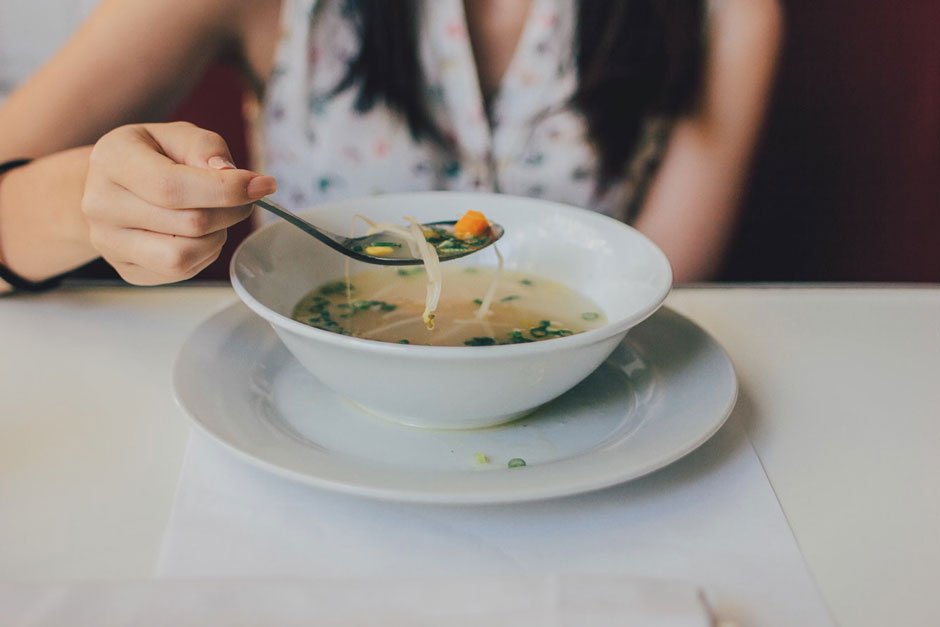Soup isn’t just food—it’s a story. A hot bowl of broth or a hearty ladle of stew carries centuries of evolution, trade, survival, and comfort. Every culture has its own version, simmered slowly through time. From prehistoric cooking pots to refined consommés, soup has always been a bridge between nutrition and tradition. What began as a basic survival meal became a centerpiece at royal feasts, street stalls, and home kitchens alike. As we travel through history’s kitchens, we’ll see how soup shaped civilizations, adapted across continents, and continues to warm hands and hearts across generations and borders.
The Origins: Early Stews in Prehistoric Times
The earliest evidence of soup comes from the Stone Age, where people boiled ingredients in animal hides or clay pots over fire. These primitive stews usually combined hunted meat, wild roots, herbs, and water. The goal wasn’t flavor—it was sustenance. Yet, through necessity, these early humans created the base for all future soup-making. Archaeologists have found charred bones and cooking vessels near ancient fire pits, suggesting that boiling food was a common practice. It allowed nutrients to be extracted efficiently and made tough meat more edible. Soup began not as cuisine, but as survival, proving its timeless value from the very start.
Ancient Civilizations and Their Signature Soups
In Egypt, Greece, and Mesopotamia, soup evolved from basic survival food into cultural identity. Egyptians flavored their lentil soups with onions and garlic. The Greeks added barley and wine. Meanwhile, Babylonians boiled vegetables, pulses, and meats in clay cauldrons. In China, medicinal soups with herbs and bones became a cornerstone of health practices. Around this time, variations of broths and stews began developing distinct identities across regions. Early records even hint at what we’d now call a basic vegetable soup recipe—simple combinations of roots, herbs, and legumes that reflected local produce and seasonal availability, forming the groundwork for centuries of tradition.
Medieval Broths and the Rise of Pottage
During medieval times, the lines between soup and stew blurred. Pottage—a thick, porridge-like mix of grains, vegetables, and sometimes meat—became the staple for peasants across Europe. Cooks prepared it in a single pot, letting ingredients simmer all day. Wealthier households added rare spices and cuts of meat, but the basic method remained the same: boil everything together to create a hearty, filling dish. This approach minimized waste and made the most of limited food supplies. Kitchens often kept a cauldron constantly bubbling, with ingredients added as they became available. This continuity made soup not just a meal, but a way of life.
Soups of the Renaissance and Culinary Refinement
As Europe entered the Renaissance, food preparation shifted from function to finesse. Chefs in noble courts began experimenting with clear broths and refined soups. Techniques like straining and skimming became common. French cuisine especially led the charge, giving rise to consommés and bisques. Ingredients became more delicate—no longer about mere sustenance, but about taste and elegance. Soups appeared as courses in elaborate feasts, no longer confined to the working class. The invention of the roux allowed for creamy soups and veloutés, marking a major turning point. Soup transformed from rustic simplicity into a culinary art form during this era.
Global Influence: How Trade Shaped Soup Across Cultures
The expansion of global trade brought a burst of new flavors to soup pots worldwide. Spices from India, chilies from the Americas, and tomatoes from the New World all found their way into regional soups. Pho in Vietnam, tom yum in Thailand, and minestrone in Italy owe their flavor profiles to trade routes and migration. These cultural exchanges enriched traditional recipes and birthed new ones. Ingredients like potatoes, corn, and beans changed the way soup was cooked and served. Cooks began blending local traditions with exotic imports, proving that soup doesn’t just cross borders—it absorbs them, becoming more flavorful with every step.
Industrialization and the Birth of Canned Soup
The 19th century changed soup forever. With industrialization came the invention of mass food production. In 1897, chemist John T. Dorrance revolutionized the food industry by creating condensed soup for Campbell’s. This allowed soup to be mass-produced, stored for long periods, and sold affordably. Families could now enjoy tomato, chicken noodle, or cream of mushroom without hours of cooking. This development fit perfectly with a growing urban workforce that had less time to cook. Canned soup offered convenience, consistency, and a long shelf life, making it a pantry staple. It also paved the way for soup as a global commercial product.
Soup in Wartime: Comfort and Ration
During both World Wars, soup became more than a meal—it became emotional nourishment. Soldiers received soup in field kitchens as part of their rations, helping them stay warm and fed in harsh conditions. Governments encouraged civilians to prepare soups at home with rationed ingredients. “Victory soups” used beans, grains, and vegetables to stretch supplies. These meals provided energy and comfort during times of uncertainty. Many families relied on soup as an affordable and filling option, often cooking in bulk for the entire week. In these moments, soup symbolized resilience, showing how simplicity could sustain people through hardship and fear.
Post-War Soups and the Rise of Convenience
By the 1950s and 60s, modern kitchens had refrigerators, microwaves, and electric stoves, giving rise to quick-cooking soup mixes and frozen options. Marketing played a big role—ads promised a warm meal in minutes, tapping into the era’s love for convenience. Instant soups became a hit, especially powdered versions that only needed hot water. Meanwhile, recipes that used canned soup as a base for casseroles and slow cooker meals became household favorites. Soup’s role shifted slightly—it wasn’t just a dish anymore; it was a shortcut, a time-saver. This period reshaped how people thought about cooking, family meals, and nutrition.
From prehistoric stews simmering over open fires to the nutrient-rich broths filling today’s wellness bowls, soup has always adapted to the world around it. It fed workers during famine, lifted spirits during war, and evolved with every new ingredient that crossed a border. Yet, at its core, soup remains simple: water, heat, and love. Every spoonful tells a story—of who we are, where we’ve been, and what we value. Whether it’s a classic chicken noodle, a spicy pho, or a personal vegetable blend, soup continues to unite us in the most human way: through warmth, flavor, and shared tradition.






Leave a Reply